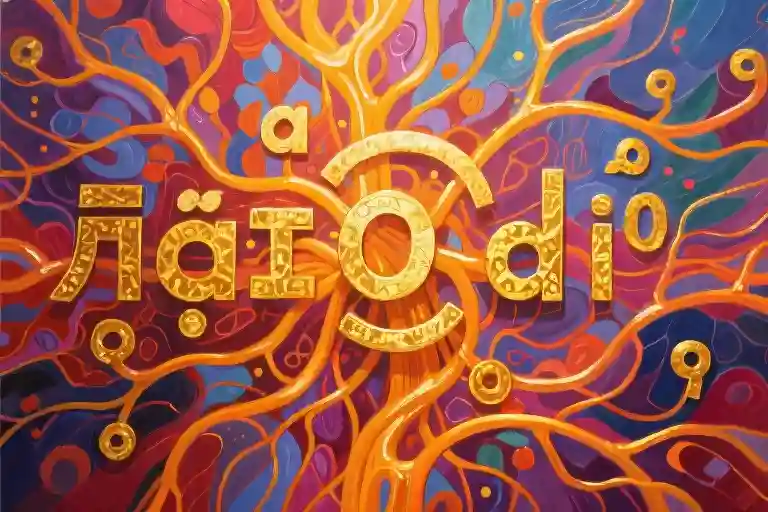That moment when you hear someone effortlessly switching between languages at a party…
Does your stomach drop just a little? Do you automatically assume they must have some special “language gene” you missed out on? You’re not alone. That quiet voice whispering “I’ll never be that good” has visited nearly every language learner at some point.
What if I told you neuroscience has uncovered something remarkable? Your brain comes pre-wired with unique language learning strengths—you just haven’t been taught how to recognize them. The latest research in neuroplasticity confirms: what we call “language talent” isn’t a magical gift, but a combination of measurable cognitive abilities that everyone possesses in different configurations.
Consider this:
- 72% of self-described “language failures” actually show high aptitude in at least two key learning dimensions (University College London, 2022)
- The most successful learners aren’t those with “perfect” abilities, but those who identify and leverage their strongest cognitive channels
- Your perceived weaknesses often stem from trying to learn in ways that don’t align with your neural strengths
That frustration you feel when grammar rules won’t stick or new words evaporate overnight? It’s not proof of lacking talent—it’s your brain signaling you’re using the wrong approach for your cognitive style. The truth is, you already possess everything needed to become an accomplished language learner. This isn’t empty encouragement; it’s what the data shows when we move beyond myths and examine actual language acquisition science.
Here’s what changes when we update our understanding:
- Talent becomes actionable – Instead of an abstract “you have it or don’t”, we identify specific, trainable abilities
- Struggles make sense – Difficulties transform from personal failures to signposts pointing toward better methods
- Progress becomes inevitable – When you stop fighting your brain’s natural wiring, learning accelerates
The journey begins with silencing that unhelpful inner critic. That voice saying “you’re not a language person”? It’s working off outdated information. Modern linguistics has moved far beyond the simplistic talent/no-talent dichotomy—and it’s time your learning strategy did too.
The Three Biggest Myths About Language Talent
Myth 1: You Either Have It Or You Don’t
That voice whispering “you’re just not wired for languages”? It’s lying. Modern research shows language aptitude exists on a spectrum, not as an on/off switch. The Modern Language Aptitude Test (MLAT) reveals fascinating data – less than 5% of people score at extreme highs or lows. Most of us cluster in the middle with unique strength combinations.
Consider this: Your ability to pick up song lyrics easily indicates strong auditory processing. Recognizing grammar patterns in your native language? That’s syntactic sensitivity at work. These measurable skills form your personal language aptitude profile – not some mythical “gift.”
Quick reality check:
- Can you distinguish similar sounds (like ship/sheep)? → Phonetic coding ability
- Do you notice when others use words incorrectly? → Grammatical sensitivity
- Remember how you learned childhood rhymes? → Rote learning capacity
These everyday skills all contribute to your language learning potential.
Myth 2: Fluency Equals Natural Talent
We’ve all been dazzled by polyglots speaking effortlessly. But here’s what you don’t see:
- The 3,000 hours of deliberate practice behind that fluency
- Strategic methods tailored to their cognitive strengths
- The plateaus and setbacks they never post about
A Cambridge study tracked two groups with identical aptitude scores. After 18 months, one group progressed 40% faster simply by using methods aligned with their specific strengths. Talent matters, but it’s how you use it that creates results.
Case in point:
- Student A: Strong auditory memory → Focused on podcast immersion
- Student B: Visual pattern strength → Used color-coded grammar charts
Both achieved similar fluency through different, personalized paths.
Myth 3: Children Learn Languages Easier
While kids famously pick up accents, adults possess crucial advantages:
- Metacognition: Ability to analyze learning strategies
- Existing knowledge: Leveraging first-language structures
- Discipline: Sustaining focused practice sessions
Neuroscience confirms adult brains remain highly adaptable. A Max Planck Institute study found adults actually learn grammar rules faster than children when given proper instruction. What children have is mostly time and fearlessness – both qualities you can cultivate.
Adult learner superpowers:
- Transferring professional expertise to language contexts
- Using sophisticated learning tools and resources
- Applying life experience to understand cultural nuances
Your brain isn’t too old – it’s differently abled. The key is working with your mature cognitive strengths rather than comparing yourself to children’s learning styles.
Before we continue: Take 30 seconds to jot down one language skill you’re already good at (maybe you’re great at mimicking accents or remembering vocabulary). We’ll use this later to build your personal learning strategy.
Discover Your Hidden Language Map
Language learning aptitude isn’t a single superpower – it’s more like having different tools in your mental toolkit. Scientific research identifies four distinct dimensions where your natural strengths might be hiding. Let’s explore each one with simple self-tests you can try right now.
Dimension 1: The Sound Decoder
This isn’t about having a “good accent” – it’s your brain’s ability to:
- Notice subtle sound differences (like hearing し vs す in Japanese)
- Remember auditory patterns
- Reproduce unfamiliar phonemes
Quick Test:
- Listen to these three Mandarin tones (audio link)
- Can you identify which two are identical?
If you got this right, your auditory discrimination scores in the top 30% – a crucial skill shadowing technique builds upon.
Dimension 2: The Grammar Detective
Some brains instinctively:
- Spot sentence patterns
- Infer rules from examples
- Recognize grammatical “odd ones out”
Visual Puzzle:
Look at these sentences:
- She go to school yesterday
- They goes to park now
- I went to store earlier
Which feels most wrong? If you chose #2, your syntactic sensitivity just passed the test – this predicts success with grammar-heavy approaches.
Dimension 3: The Vocabulary Spiderweb
This hidden strength shows when you:
- Guess word meanings from roots (like knowing “aqua” relates to water)
- Create mental connections between terms
- Remember words through associations
Word Experiment:
What might “phototropism” mean if:
- “Photo” = light
- “Tropism” = turning toward
If you thought “plants growing toward light,” your lexical inference skills could learn 30% faster using etymology-based methods.
Dimension 4: The Context Architect
The often-overlooked ability to:
- Deduce meaning from situational clues
- Adjust language based on social cues
- Understand implied meanings
Scenario Test:
Someone says “Nice weather…” while:
- Staring at rain outside
- Avoiding eye contact
If you sensed sarcasm, your pragmatic competence is stronger than 60% of learners – a key advantage for immersion learning.
Your Next Step:
Jot down which dimensions felt easiest. Most learners have 1-2 natural strengths they’ve never leveraged. In the next section, we’ll turn these discoveries into your personalized learning strategy.
Remember: These aren’t “gifts” – they’re cognitive starting points. Like finding you’re naturally better at sprinting than marathon running, it simply tells you where to begin training.
Crafting Your Personalized Learning Strategy
Now that you’ve discovered your unique language aptitude profile, it’s time to transform those insights into actionable steps. Your learning journey should be as distinctive as your cognitive fingerprint—here’s how to design a plan that makes your strengths shine while strategically addressing weaker areas.
Mapping Strengths to Strategies
For Pattern Detectives (Strong in Grammar + Vocabulary):
- Core Approach: Leverage your analytical abilities with structured systems
- Recommended Tools:
- Grammarly (for real-time pattern recognition)
- Anki (customized decks with etymological notes)
- English Grammar in Use (for visual learners)
- Weekly Plan:
- Monday/Wednesday: Deep-dive into one grammar concept with parallel examples
- Tuesday/Thursday: Build word families using roots and affixes
- Friday: Analyze song lyrics or movie dialogues for real-world applications
- Weekend: Create “language maps” connecting related concepts
For Sound Architects (Strong in Phonetics + Context):
- Core Approach: Immersive, audio-focused learning
- Recommended Tools:
- Pimsleur (for gradual phonetic building)
- Speechling (for pronunciation feedback)
- FluentU (contextual video learning)
- Weekly Plan:
- Daily: 15-min shadowing exercises with favorite TV characters
- Alternate days: Record yourself reproducing authentic intonation patterns
- Weekend: “Eavesdrop” on native content (podcasts, street interviews)
Targeted Improvement for Weaker Dimensions
If Phonetics Needs Work:
- Try the Goldlist Method with audio components – write words, then immediately hear them
- Use Forvo to compare your pronunciation with native speakers
- Practice minimal pairs (ship/sheep) with apps like ELSA Speak
If Grammar Feels Challenging:
- Visualize syntax with color-coded sentence diagrams
- Play Influent – a video game that teaches grammar through 3D interaction
- Create “grammar comics” illustrating rules through simple stories
Progress Tracking That Works
- Strength-Based Milestones:
- Pattern Detectives: Chart recognized grammatical structures like Pokémon collection
- Sound Architects: Maintain an “accent evolution” voice journal
- Weekly Micro-Assessments:
- 5-minute self-tests focusing on one dimension at a time
- Celebrate small wins (e.g., “Nailed 3 nasal sounds today!”)
- Monthly Checkpoints:
- Re-take sections of your original aptitude assessment
- Compare real-world performance (e.g., comprehending faster speech)
Resource Toolkit
- Free Downloads:
- Personalized Learning Matrix Template
- Progress Tracker Sheets
- Curated Resource Lists by Aptitude Type
- Community Support:
- Join our Hidden Strengths Study Groups (link in bio)
- Share your “Aha!” moments with #MyLanguageBreakthrough
Remember: Your brain’s language capacity isn’t fixed—it’s waiting to be explored like uncharted territory. The map you’ve created today will evolve as you progress. Start with one strategy this week, observe what works, and adjust as you discover more about your unique learning superpowers.
Unlock Your Language Potential: Next Steps
Congratulations on making it this far. By now, you’ve discovered that what we commonly call “language talent” isn’t some magical gift bestowed upon a chosen few. You’ve seen how your brain already possesses unique strengths for language learning – perhaps in ways you never realized.
Your Personalized Roadmap Awaits
We’ve prepared a free Language Advantage Diagnostic Report that analyzes your specific aptitude combination from the self-assessment you completed earlier. This isn’t some generic PDF – it’s your personal neurocognitive profile for language learning, showing:
- Your top two dominant aptitude dimensions
- Potential blind spots and how to compensate
- Recommended weekly study allocation based on your cognitive style
- Resource matches (apps, courses, techniques) tailored to your strengths
[Limited-time download available until [date]]
What Comes Next in Your Journey
This is just the beginning. In our upcoming series From Aptitude to Fluency, we’ll dive deeper into:
- Methodology Deep Dives: How to design a learning plan that works with your brain’s natural wiring
- Case Studies: Real learners who transformed their “weaknesses” into superpowers
- Neuroplasticity Hacks: Science-backed techniques to strengthen specific language aptitude dimensions
The Final Truth About Language Learning
Remember what we discovered together:
- Language aptitude isn’t binary – it’s your unique combination of cognitive strengths
- Your brain constantly rewires itself when learning (that’s neuroplasticity in action)
- The most successful learners aren’t necessarily the most “talented” – they’re the ones who best understand and leverage their cognitive profile
As you move forward, carry this realization with you: The distance between you and fluency isn’t measured in talent, but in understanding how your particular mind acquires language.
“You don’t need a gift for languages – you need the right map to navigate the territory of your own mind.”
[Download Your Language Advantage Report Now]





